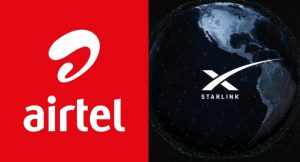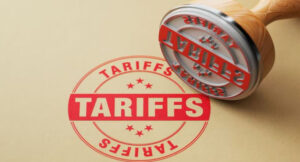One of the biggest deals of the year so far started around Valentine’s Day, with a love letter.
Chris Winfrey, the chief executive officer of cable giant Charter Communications Inc., wrote to his counterpart at Cox Communications Inc. with a proposal: If Cox was at all interested in combining the two companies, now was the time to move. The stars, he said, were finally aligned.
It took Cox CEO Alex Taylor, the great grandson of the company’s founder, about a month to respond. His family had owned Cox for four generations and is the longest serving operator in the industry, so ending sole ownership wasn’t just a question of price — there was also a 127-year legacy at stake.
Once he decided to engage, after discussions with family members including his uncle and former CEO of the company, Jim Kennedy, negotiations quickly kicked into high gear. On Friday, the deal was announced, confirming a Bloomberg News report: Charter and Cox agreed to combine in a cash-and-stock deal that values Cox at about $34.5 billion including debt, creating the top broadband operator in the US. The Cox family, the statement said, will be the largest shareholder in the merged company.
Details of the whirlwind courtship, and how Charter finally convinced Cox to consider a deal, were described by multiple people involved in the talks, who asked not to be identified discussing private details.
A spokeswoman for Charter declined to comment, while a Cox representative didn’t provide comment.
For Charter, the deal was a slow burn. John Malone, the 84-year-old billionaire who was a director at Charter until 2018 and has had influence over the company via his control of Liberty Broadband Corp., had kept Cox on his dream list for about a decade, and made various approaches over the years alongside former CEO Tom Rutledge and Winfrey. It was never the right time.
But it wasn’t until November that two coinciding events provided the impetus for a deal to finally happen. First Malone, who was deep into estate planning, agreed to collapse Liberty Broadband into Charter, eliminating Liberty’s consent rights and directorships and making space to bring in another shareholder. The deal also meant Cox wouldn’t have to negotiate with multiple parties.
The week prior, Donald Trump had been reelected as US president. With Trump back in the White House, Charter felt it might have an easier time getting regulators on board with a deal than under Joe Biden’s antitrust cops, who many felt had been against big deals regardless of their merits.
A representative for Liberty Broadband declined to comment.
Takeover Template
Charter already had a well-thumbed playbook for bringing large, billionaire shareholders into its fold. In 2015, it agreed to buy a majority stake in the billionaire Newhouse family’s cable company Bright House Networks from its parent Advance/Newhouse. It paid for the holding with several types of stock and cash.
That, along with the more recent Liberty Broadband deal, served as a template for the Cox negotiations. A so-called Up-C structure was used, which allows a closely held company like Cox to go public while keeping some tax advantages.
Advance Newhouse, meanwhile, still has seats on Charter’s board and some consent rights, so it didn’t make sense to offer Cox something significantly different from what the longtime partner already had. Eric Zinterhofer, Charter’s non-executive chairman, was tasked with getting the Newhouses comfortable with the idea of a Cox deal, assuring them that the dynamic wouldn’t change when Cox came in.
A representative for Advance couldn’t be reached for comment.
As Charter was making preparations behind the scenes, Cox had also been considering its future. Over the previous two years the advantages of scale and scope in cable had become more apparent, as wireless companies lured away broadband subscribers with their own fiber offerings and abundant streamed content emboldened consumers to cut the cord on cable.
Cox early last year brought in consultants from McKinsey & Co. to conduct a review, including looking at the company’s position in the industry.
Winfrey’s letter, sent months after McKinsey had wrapped up its review, came at the perfect time. In the multi-page missive — which several of the people referred to as a love letter given when it was sent — he praised the company that the Cox family had built and laid out the strategic rationale for a deal: The added scale from a combination would position them to better compete and enable them to bundle offerings and more efficiently invest in infrastructure.
Before deciding to engage, Taylor consulted internal confidantes like Cox President Dallas Clement, and brought in external advisers to determine the best path forward. The company also deliberated whether to canvas the market for other potential tie ups, but ultimately decided to unilaterally negotiate with Charter.
Daily Discussions
Once negotiations were underway, Taylor and Winfrey stayed in near constant communication, exchanging text messages and phone calls on a daily basis. The men had spent years getting to know each other, and wanted to keep as much of the negotiations as possible between the two of them to avoid leaks.
Inside Cox, the deal was known as Project Horizon. At Charter it was called Project Cabot for Italian explorer John Cabot, who led voyages to the east coast of North America in the 15th Century.
Meanwhile, Clement rallied Cox’s advisers and put together a five-week plan for due diligence to be conducted on Charter’s operating plan, strategy, capital structure and legal agreements. Advisers flew down to Atlanta to help prep Taylor and other members of Cox’s management team for negotiating sessions, and Cox set a goal of having a formal response to Charter’s term sheet by early May.
Once that response was sent, the two sides reached a handshake agreement within a week.
The deliberations were able to move smoothly in part because the people around the table already knew each other well. Citigroup Inc.’s Dan Richards and Christina Mohr were among the team advising Charter, while Cox’s bankers included Evercore Inc.’s Eduardo Mestre and Dan Mendelow, Wells Fargo & Co.’s Derek Van Zandt and Jeff Hogan and Allen & Co.’s Ketan Mehta and Nancy Peretsman.
Mestre, Richards, Mohr and Van Zandt all worked together at Citigroup, with Mehta overlapping with some of them at the same bank.
Byron Trott, whose firm also won a role advising Cox, has been on the Cox Enterprises board for a decade and has known the family for years. LionTree‘s Aryeh Bourkoff and Ehren Stenzler have been close to Charter and companies associated with Malone for years.
Sweet Finish
The main discussions were around valuation, how much of the combined company Cox would own and what the breakdown would be between cash, convertible preferred stock and common stock. The Cox family also wanted to have a continued presence in Atlanta, but moving the headquarters there wasn’t a dealbreaker. The combined company, which will be called Cox, will be headquartered in Stamford, Connecticut, but keep a significant presence in Atlanta.
Last week, Taylor and Winfrey had decided they wanted to announce a deal by Friday morning. They agreed to sprint toward a deadline of 7 a.m.
To keep everyone on track the night before the deal, lawyers for all of the stakeholders – fueled in at least one office by a late-night ice-cream order – agreed to check in with each other every few hours. If at any point they hit an impasse that would keep them from making the deadline, they’d agree to continue over the weekend.
That didn’t happen, and the announcement hit the newswires about 10 minutes before the deadline.
“The most important thing to me personally and to my family, the Cox family, is trust,” Taylor said hours later on a conference call discussing the deal. “I would call this organization and this whole partnership a powerhouse of integrity and trust and hard work and long-term commitment that you won’t find anywhere else.” Bloomberg









